 |
A standalone Ne 2 board (i.e. a distant signal post plate). The H-board instructs a halting train to stop
here. This picture was taken at Hamburg-Dammtor track 1 (S-Bahn), and since the signals
are placed to the left of the track, they are meant for wrong track operation. Should in a
rare event a train be required to use the left line towards Hamburg Hbf, there is no
colour light signal, but the standalone distant signal post plate tells the driver that he
is approaching a main signal which may show stop and hence drive at appropriate speed. |
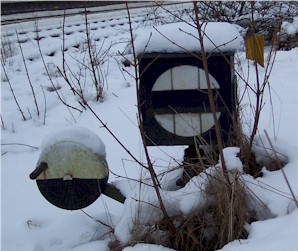 |
The signal device of a derailer, showing aspect Sh 0 (a line-close signal).
The standard position for this
derailer is "derailer on, line closed" as you can see by the black part of the
operating lever facing down (standard position is black downwards: "dirt facing
dirt").
|
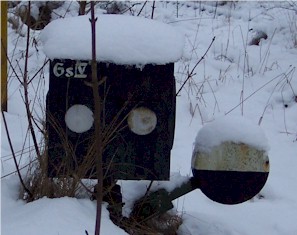 |
The rear of the same signal. |
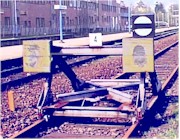 |
One could suspect that driving beyond is not advisable, but to make sure
DBAG puts an Sh 0: stop-no passing signal onto
every buffer. |
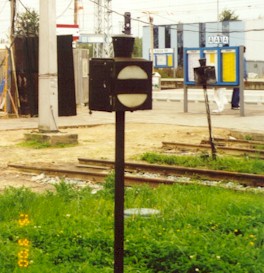 |
An Sh 0 marks the end of track in Rostock Hbf. |
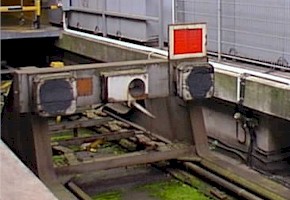 |
At dead entry routes instead of an Sh 0 an Sh 2 board is placed. This is a track at
Hamburg-Altona. |
 |
This is a point signal for a manually
operated point. The point is currently set to straight and for the curved track the box
would turn about 90° clockwise. As the black part of the lever weight is facing
downwards, this points are set to their standard position.
See also light points signal.
|
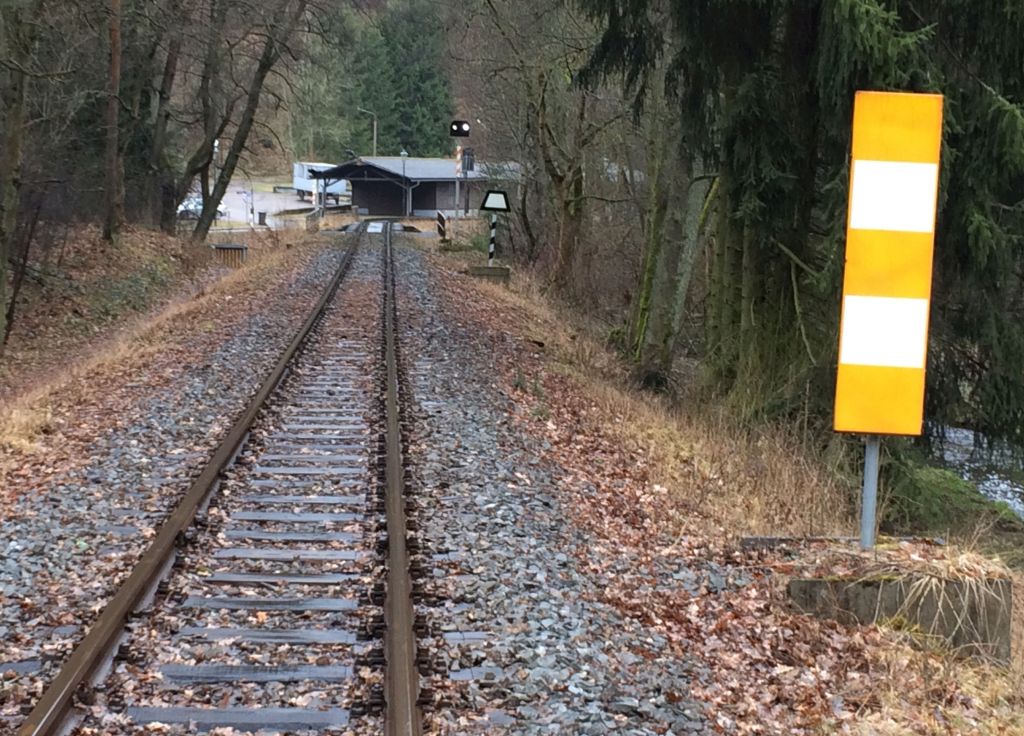 |
So 17 Ankündigungsbake
(Announcement board) for So 18 signal. |
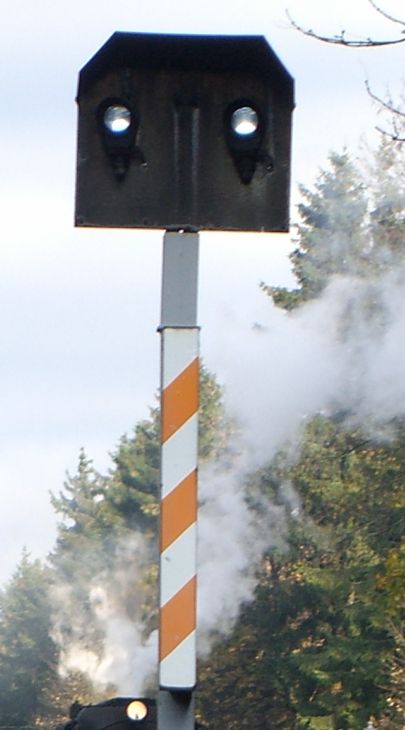 |
So 18 signal for
spring-loaded points displaying aspect So 18a: Points can be travelled facing points
To
the left you see a Wn points signal. Usually
black, this one is yellow to indicate print-loaded points
|
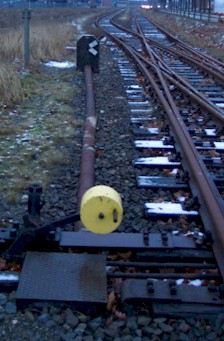 |
A signal for double-slip points. The yellow lever weight tells us that
there is no "default" position. |
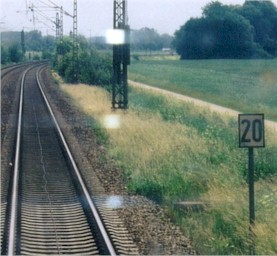 |
A DB Lf 7:
From here on, the maximum speed is 200 km/h.
Note that this is a special case: Usually, only the begin of a speed restriction
is signalled, so you are unlikely to see a 200 km/h signal.
This one is on the Augsburg-Donauwörth line which is equipped with the experimental Sk signalling system (see there). One of its properties is that every
speed change is signalled: this sign here is really an end of speed limit - resume
200 km/h line speed signal. |
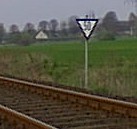 |
A DR Lf 4
(permanent speed restriction warning board) giving advance notice of a speed restriction
of 50 km/h. |
 |
Lf 1: Expect a temporary
speed restriction (in this case: 70 km/h) |
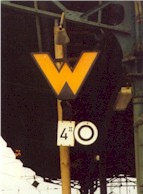 |
A DR Ra 11a waiting sign
(DB: Ra 11) with a Kreisscheibe at Rostock Hbf. The number plate 4II
tells us that for waiting signs the same numbering
scheme as for line-close signals is used. |
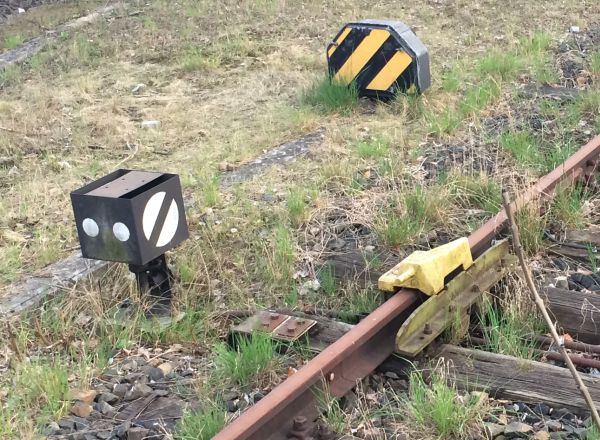 |
Another Gleissperre (derailer), the signal (the two white
dots) is seen from the rear. The box with the black and yellow stripes is
the rear of an electric Sh 0/1 line-close signal. |
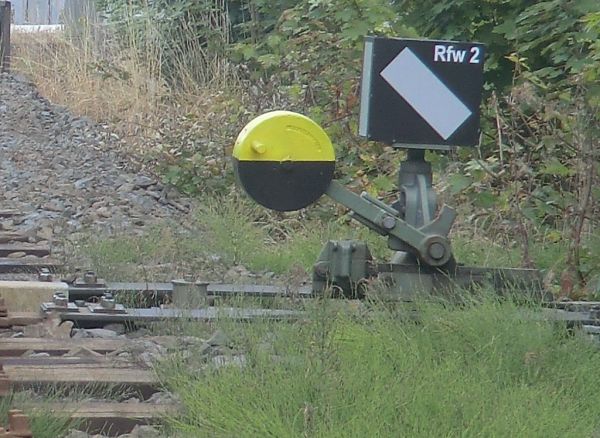 |
A Weichensignal (point signal) showing deflection to the
left. Click the picture for a larger version. The yellow-black colouring of
the lever weight tells us that this is a Rückfallweiche
(spring-loaded point, lit. "fall-back point") which can be trailed in either
direction, and that the black part of the weight is facing ground ("dirt
facing dirt") means that this point is in its default position.
Usually the point signal should also have a yellow background to indicate
that this is a spring-loaded point, but it seems here you should read the
point label: Rückfallweiche
2. |
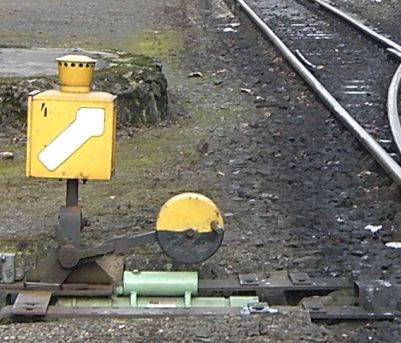 |
Another point signal of a spring-loaded point. In DR area,
for spring-loaded points also the point signals are coloured yellow. |

















 home
home picture index
picture index email
email Sv signals 2
Sv signals 2 boards
boards